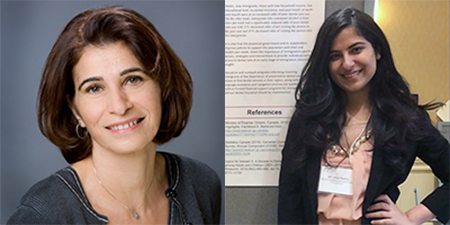Vrati Mehra, a York University graduate student, conducted a study that revealed more than one-quarter of Indigenous Peoples go to the dentist only for emergencies, which raises the critical need for policy to improve oral health for the population.
The findings and results of the collaboration with Faculty of Health Professor Hala Tamim were published in the Journal of Immigrant and Minority Health in an article titled “Prevalence and Factors Associated with Visiting the Dentist Only for Emergency Care Among Indigenous People in Ontario.”
“This study is important because it is one of the first to highlight the extent of poor dental care use among this population,” Mehra explains.

Mehra’s work utilized data from the Canadian Community Health Survey, one of the biggest national health surveys administered in the nation, which collects health-related data on Canadians aged 12 years and older across all provinces and territories. Mehra’s study also examined a 2017 Auditor General of Canada report, which revealed that Inuit and First Nations people have nearly twice as much dental disease as other Canadians and that Health Canada has little insight into whether dental programming for Indigenous Canadians is improving oral health.
It’s one reason why Mehra’s article also stresses the policy implications of how the social programs that deliver health services to Indigenous Peoples must be routinely assessed and improved to cater to the needs of this population and be better tailored to confront the social determinants – the broad range of personal, social, economic and environmental factors that determine individual and population health – that hinder Indigenous Peoples from using these services.
“This over-reliance on emergency treatment not only means worse health outcomes for patients, but also leads to greater long-term health-care costs for the province as well as the patient,” Mehra says. “Although social dental care programs do exist, it is unclear as to how efficacious they are. It is important that we routinely assess and amend these programs to accommodate the needs of this population.”


